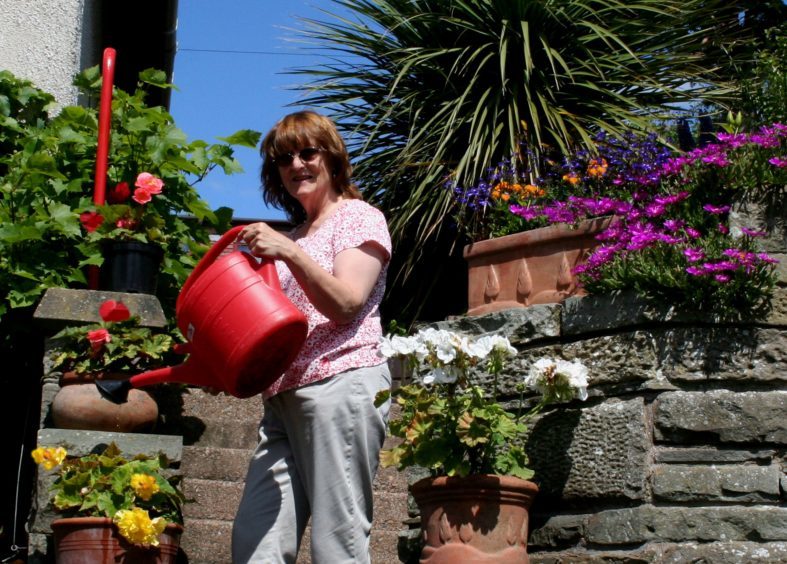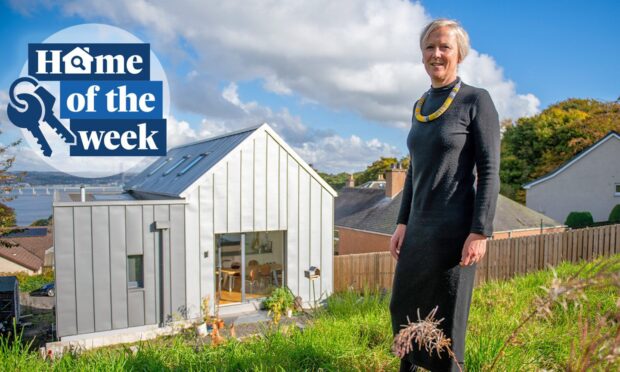Summer is almost here which means John Stoa is set to put another season to bed.
The spring bedding put on a fantastic display but now tulips, wallflower, polyanthus and myosotis are all past their best so it is time to replace them in tubs, hanging baskets and flower borders with summer bedding plants.
Pansies always continue to bloom from spring well into summer so let them have extra time while still giving us plenty of flowers.
However if you need the space they can be carefully transplanted to a border, and water in well, where they will continue to flower.
Keep all tulip and crocus bulbs and dry them off so they can be replanted in early autumn in a border.
When clearing tubs, pots and baskets check for vine weevils, slugs and snails and dispose of them before they get a chance to munch away at fresh foliage and roots, and remove any weeds.
It is a good idea to replace some of the old compost with fresh compost and add in some fertiliser and some rock dust.
Check out the security of wall brackets for hanging baskets as these can become loose over time and may need replacement of screws and plastic rawl plugs.
Hanging baskets can be very heavy once plants are in full growth then they get watered. Everyone has their own favourite plants for hanging baskets.
My favourites are geraniums, petunias, trailing lobelia, French marigolds, Tagetes, Impatiens, Nemesia, trailing begonias and fuchsias.
This will give plenty to choose from when you select colours to match up.
I line my baskets with polythene from compost bags turned inside out and cut holes in the sides for plants to make sure my baskets are covered with foliage and flowers.
If the location has some shade then use fuchsias, geraniums, trailing begonias and impatiens, and keep the petunias for full sun.
Use blue petunias for scent near entrance doorways.
Tubs and borders get the same range but add some of the taller growing plants such as African marigolds, antirrhinum, cosmos and tuberous begonias.
Salvias also put on a bright display of red flowers, but I have to admit it is the geraniums that flower first from spring onwards and are still flowering in October when we are ready to replace them with the next year’s spring bedding.
Plants ready for planting are available in garden centres, and some have plug plants to take home, pot up and grow into bigger plants for bedding.
However the keen gardener can grow most of his own stock from seeds and geraniums and begonias can be retained year after year.
My geranium stock of selected varieties is about twenty years.
I take cuttings each autumn, and grow them on a windowsill over winter.
In spring they get potted up and transferred to my cold greenhouse in March.
I remove all flower buds over winter up till end March so plants can keep their energy into growing strong stocky plants.
My training as an apprentice gardener in the nurseries at Camperdown Park where we grew geraniums by the thousands, way back in the nineteen sixties has stayed with me ever since.
We saw the benefit of our work in the mass displays of colour all over the town and in Parks, open spaces and gardens. Paul Crampel was always the best red geranium.
My collection of tuberous begonias was started well over twenty years ago when I bought a batch of fifty ready to plant.
After flowering all summer they get dried off for storing in winter then grow again in spring every year.
If the tubers get too big I just chop them in half once the shoots are a few inches high. They never come to any harm as they are quite tough.
Preparation of the ground for pots, tubs and baskets before planting is always important as they need good fertile soil with plenty of compost to aid drainage and feed the growing plants.
Most are fairly untroubled by pests and diseases but fuchsias, begonias and impatiens are favourites for vine weevils so if you think they could be a problem use a nematode based insecticide.
Slugs and snails can also be a problem so watch out for them and use slug pellets if required.
Wee jobs to do this week
Now that drier sunny weather has had a chance to warm up the soil, we can now plant out courgettes and pumpkins.
They are all gross feeders so make sure the ground has been well composted and add some fertiliser at planting.
During the growing season keep them well watered and feed regularly.
Plant out about a metre apart as they need plenty of room to grow, especially the pumpkins which have shoots that like to travel as far as allowed, before summer pruning.
















